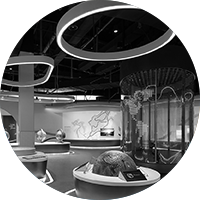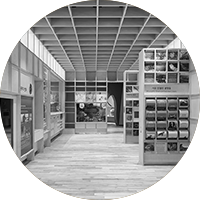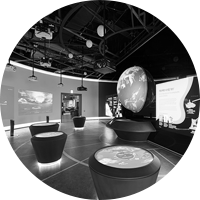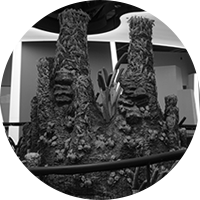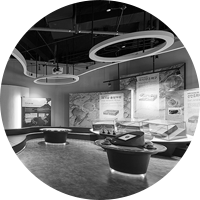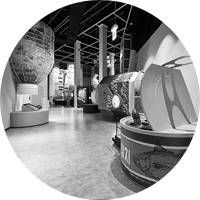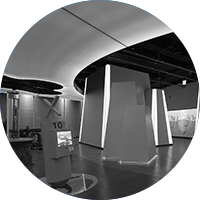Tour Course
Elementary School (lower grades)
- Estimated Duration: About 50 minutes
-
Zone 3
- Ocean, a Large Body of Water
- Waves Created by Wind Strength
- Salt, the Reason Why Oceans are Salty
-
Zone 4
- Organisms in Coral Reefs
- Mudflat, a Breathing Coastline
- Continuous Discoveries
-
Zone 5
- Humankind Facing the Challenge of the Mysterious Ocean
- Deep Sea Challenge Project
-
Zone 7
- Circulating Water
- Oceans in Real Time
-
Zone 8
- Organisms that Adapted to the Deep Ocean
- Ocean, Earth’s Source of Oxygen
- Photosynthesis of Algae
- Ocean, the Place that Gave Birth to Lives
- Interesting Hypotheses
-
Zone 9
- Ocean, Water Contained in the Land
- The Birth of Oceans
- The Ever-changing Ocean Crust
- Movement of Plates
-
Zone 10
- Difference in Density of Water and Ice
- Freshwater Ice in the Polar Regions
- Research on Future Food
- Bioengineering Research
Elementary School (higher grades)
- Estimated Duration: About 1 hour and 10 minutes
-
Zone 3
- Salt, the Reason Why Oceans are Salty
-
Zone 4
- Ocean, Water that is Alive
- Organisms in Coral Reefs
- Environment Created by Coral
- Organisms in Mudflats
- Annual Average Surface Temperature of Coasts in Korea
- Continuous Discoveries on Changes in the East Sea
- Lives Connected to One Another
-
Zone 5
- Humankind Facing the Challenge of the Mysterious Ocean
-
Zone 6
- Patches of Garbage in the Oceans
- Everything Thrown Away from Land into the Ocean
- Plastic Food Chain
- Threatened Lives
- Endangered Organisms
- Electrolyzed Ballast Water
- Action Plan to Prevent Pollution
- Expedition of the Plastiki, a Boat Made of Plastic Bottles
-
Zone 7
- Circulating Water
- Oceans in Real Time
-
Zone 8
- Organisms that Adapted to the Deep Ocean
- Ocean, Earth’s Source of Oxygen
- Photosynthesis of Algae
- Ocean, the Place that Gave Birth to Lives
- Interesting Hypotheses
-
Zone 9
- Ocean, Water Contained in the Land
- The Birth of Oceans
- The Ever-changing Ocean Crust
- Movement of Plates
-
Zone 10
- Difference in Density of Water and Ice
- Freshwater Ice in the Polar Regions
- Research on Future Food
- Bioengineering Research
Middle School
- Estimated Duration: About 1 hour and 20 minutes
-
Zone 3
- Rubber Duck’s Journey Along the Ocean Current
- Movement of Density Differences
- Current of the East Sea, a Small Ocean
- Movement of Celestial Bodies and Changes in the Sea Level
- Salt, the Reason Why Oceans are Salty
- Mixing the Regular Salinity Ratio
-
Zone 4
- Environment Created by Coral
- Mudflat, a Breathing Coastline
- Annual Average Surface Temperature of Coasts in Korea
- Changes in the East Sea
- Moving Organisms
- Continuous Discoveries
- Lives Connected to One Another
- Protected Marine Areas of the World
-
Zone 5
- The Challenger Deep of the Mariana Trench
- History of Challenge and Discovery
- The Voyage of the Beagle and Darwin
- HMS Challenger, an Ocean Survey Ship
- HMS Meteor and Bottom Contour Chart
- Jacques-Yves Cousteau’s Unlimited Imagination of the Deep Ocean
- Trieste to the Deepest Ocean
- Deep Sea Challenge Project
-
Zone 7
- Circulating Water
- Oceans in Real Time
- Wind Patterns and Movements of Typhoons
- Oceans in Real Time
- Threatened Organisms
-
Zone 8
- Chemosynthesis Ecosystem
- Hydrothermal Vent
- Marine Snow in the Deep Ocean
- Organisms that Adapted to the Deep Ocean
- Ocean, Earth’s Source of Oxygen
- Photosynthesis of Algae
- Stable Ocean Environments
-
Zone 10
- Antarctica and the Arctic Ocean
- Monitoring Climate Change
- Bioengineering Research
High School
- Estimated Duration: About 1 hour and 20 minutes
-
Zone 3
- Ocean, Large Bodies of Water Connected as One
- Rubber Duck’s Journey Along the Ocean Current
- Current of the East Sea, a Small Ocean
- Movement of Celestial Bodies and Changes in the Sea Level
- Salt, the Reason Why Oceans are Salty
- Varying Salt Water
- Salinity Seen through Electrical Conductivity
-
Zone 4
- Organisms in Coral Reefs
- Environment Created by Coral
- Mudflat, a Breathing Coastline
- Annual Average Surface Temperature of Coasts in Korea
- Changes in the East Sea
- Continuous Discoveries
- Lives Connected to One Another
- Protected Marine Areas of the World
-
Zone 5
- Humankind Facing the Challenge of the Mysterious Ocean
- History of Challenge and Discovery
- Charles Robert Darwin
- Charles Wyville Thomson
- HMS Meteor and Bottom Contour Chart
-
Zone 6
- Patches of Garbage in the Oceans
- Everything Thrown Away from Land into the Ocean
- Plastic Food Chain
- Endangered Organisms
- Disturbed Ecosystem
- Electrolyzed Ballast Water
- Cleaning Oceans Using the Current
- Expedition of the Plastiki, a Boat Made of Plastic Bottles
-
Zone 7
- Circulating Water
- Rising Sea Levels, Changing Climate
- El Niño and La Niña
- Wind Patterns and Movements of Typhoons
- Oceans in Real Time
- Threatened Organisms
- Ocean Geological Storage Technology for Carbon Dioxide
-
Zone 8
- Chemosynthesis Ecosystem
- Chemosynthesis of Tube Worms
- Marine Snow in the Deep Ocean
- Organisms that Adapted to the Deep Ocean
- Ocean, Earth’s Source of Oxygen
- Photosynthesis of Algae
- The Ocean, a Place that Circulates and Stores Carbon
- The Ocean, a Place that Gave Birth to Lives
- Traces of Water, Traces of Living Things
-
Zone 9
- The Birth of Oceans
- The Ever-changing Ocean Crust
- Finding the Ages of Rocks
- Earthquakes and the Birth of Islands
- Movement of Plates
- Fossils, Memories of the Soil
- Salt, Traces of the Ocean
-
Zone 10
- Antarctica and the Arctic Ocean
- The Polar Regions Where Deep Sea Water is Made
- Monitoring Climate Change
- Prediction of Future Resources
- Global Research Collaborations
- Predicting the Future Environment

